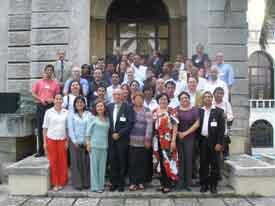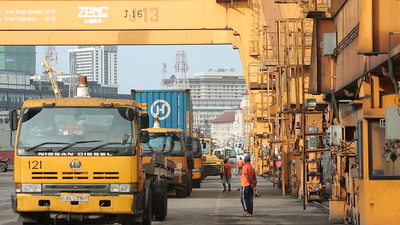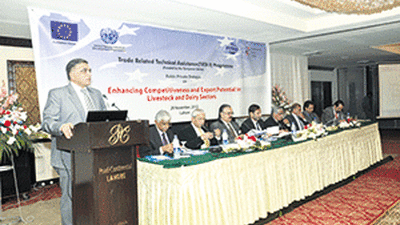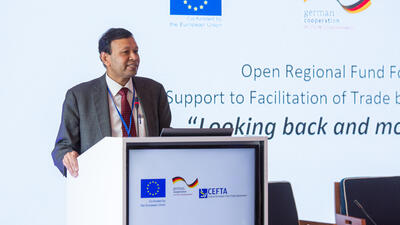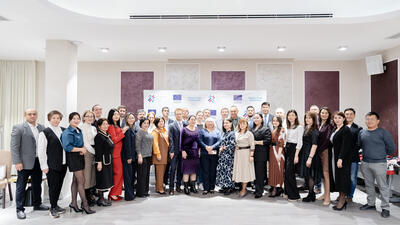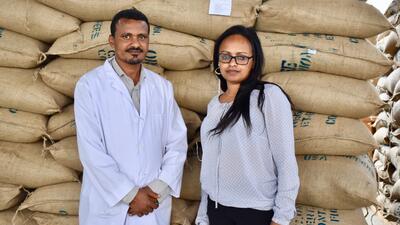International standards: A key solution to address non-tariff barriers to trade
The World Trade Organization Agreement on Technical Barriers to Trade (WTO/TBT) recognizes that access to markets can be impeded by the use of technical regulations and standards that can vary from country to country and, if set arbitrarily, can be used or perceived as disguised market protection in the form of non-tariff barriers to trade. It is important to differentiate technical regulations from standards. To avoid this scenario, countries should consider, for example, using international standards as one way of describing how to implement technical regulations, a process supported by the non-governmental International Organization for Standardization (ISO). While ISO standards are not mandatory, as they are developed as voluntary documents, they distil international consensus from the broadest possible base of stakeholder groups with expert input coming from those closest to the need for standards and the results of implementing them. In this way, ISO standards are widely respected and accepted by public and private sectors internationally.
The WTO, established in 1995, is an international organization that effectively lays down legal ground rules for international trade. Of particular interest and importance to standardizers are WTO agreements on technical barriers to trade (TBTs) and the application of sanitary and phytosanitary (SPS) measures. It is widely recognized that lack of capacity to implement WTO agreements, particularly those on TBTs and SPS measures, can constitute a major hindrance to trade. Considering growing emphasis on trade as a means to underpin economic development, especially in developing countries, this means there is an urgent and crucial need to address the issue of standards and technical regulations to allow countries to participate effectively in the multilateral trading system. In the case of the WTO SPS agreement, international standards are defined as those developed by the Codex Alimentarius Commission, the International Plant Protection Convention and the World Organization for Animal Health. There are no such definitions of international standards as a result of the WTO TBT agreement and no organizations have been named as developers of international standards under the agreement. There are ongoing discussions within the WTO TBT committee about the need to provide greater clarity around the definition of international standards so that countries, in particular developing countries, can decide where to channel scarce financial and technical resources to participate in the work of international standardizing bodies. The TBT and SPS cases demonstrate that WTO agreements can have a significant influence on standardization, both at the national and international level. The WTO has published a Code of Good Practice for the Preparation, Adoption and Application of Standards as annex 3 to the WTO/TBT Agreement. Ensuring compliance with the code should be a major part of the operations of a national standards body (NSB).
In its second triennial review of the TBT agreement in 2000 and reconfirming its position in the fifth review in 2009, the WTO TBT Committee agreed on principles that should be observed when international standards are elaborated. There are six principles covering transparency, openness, impartiality and consensus, effectiveness and relevance, coherence, and addressing the concerns of developing countries. These principles should be observed by all international standardizing bodies as well as NSBs. In a joint paper by the ISO and International Electrotechnical Commission (IEC) that was submitted to the WTO TBT committee in March 2012, both organizations state that the six TBT principles are fundamental pillars on which international standardization should be built. The principles are embodied in ISO and IEC work, and are part of best standardization practices for both systems. They are also used by the organizations' national members. It is extremely important that the principles on which a standard has been developed be understood. Simply put, not all standards are developed using the above principles. This may be fine if the need is for consortia standards, but where broad issues or interest are involved only standards developed using the above principles should be considered. It would be helpful if such differentiation was made in databases of standards, such as the one maintained by ITC.
As well as working with organizations such as IEC, ISO works closely with its members to develop and sustain standards. It has observer status in the WTO TBT Committee and is attentive to the needs of its members in terms of the development of international standards. Essentially, the organization is a federation of the national standards bodies of 164 countries, including developed and developing countries as well as countries with economies in transition. Each ISO member is the body most broadly representative of matters of standardization in its country. Members propose new standards, participate in their development and provide support in collaboration with the ISO Central Secretariat for the 3,300 technical groups that develop standards. ISO members appoint national delegations to standards committees and more than 50,000 experts voluntarily contribute annually to the work of the organization. When work is published as an ISO international standard, it may be adopted as a national standard by ISO members and translated. Standards are developed through a double layer of consensus, first among the technical experts who participate in the work of the ISO technical committees, then at the level of the ISO members who vote on draft standards.
Developing countries constitute three quarters of ISO membership. Therefore, the organization has developed technical assistance and training packages tailored to the various needs of its members and particularly to developing countries. These packages are critical in keeping the ISO system primed and operating at maximum efficiency for the benefit of an international community that expects quick, credible and consensus-based solutions in an increasingly complex world. ISO technical assistance and training is provided in the context of the ISO Action Plan for Developing Countries 2011-2015 with the objective of achieving the following outputs:
• Increased participation in ISO technical work;
• Capacity building in standardization and related matters for ISO members and their stakeholders;
• Improved awareness of the role and benefits of international standards;
• Strengthening ISO members in developing countries at the institutional level;
• Strengthening regional cooperation;
• Introducing the subject of standardization as part of educational curricula.
The involvement of both developed and developing countries in the ISO system ensures the global relevance of ISO standards, which constitute consensus-based tools for business, consumers and society at large. As ISO standards are developed on the basis of consensus, their use to help explain and amplify countries' technical regulations can be expected to alleviate the potential to introduce technical barriers to trade. For example, in the area of conformity assessment and accreditation it is widely accepted that ISO standards are the reference. This allows mutual recognition of conformity assessment procedures and accreditation among countries, thus facilitating international trade.
Definitions
A standard is a document established by consensus and approved by a recognized body that provides, for common and repeated use, rules, guidelines or characteristics of activities or their results aimed at the achievement of the optimum degree of order in a given context. A standard is normally for voluntary use. Voluntary standards are not technical regulations unless and until they are referenced by a regulatory authority.
A technical regulation is a regulation that provides technical requirements, either directly or by referring to or incorporating the content of a standard, a technical specification or a code of practice. It is normally mandatory. Technical regulations may be developed directly by regulatory authorities without making reference to standards, in which case any documents or requirements are not consensus based.
Non-tariff measures (NTMs) are policy measures that have an effect on trade flows. They can be imposed at a border, for example on imports or exports, or applied in a domestic economy. When NTMs have a protectionist effect they are referred to as non-tariff barriers.
Conformity assessment is a collective term covering all the services needed to provide evidence that a product or service complies with a standard or technical regulation. Conformity assessment can be provided by independent third parties or by a supplier depending on the purchaser or regulatory authority requirements. Conformity assessment includes inspection, testing, product certification, system certification or any relevant combination of these.




